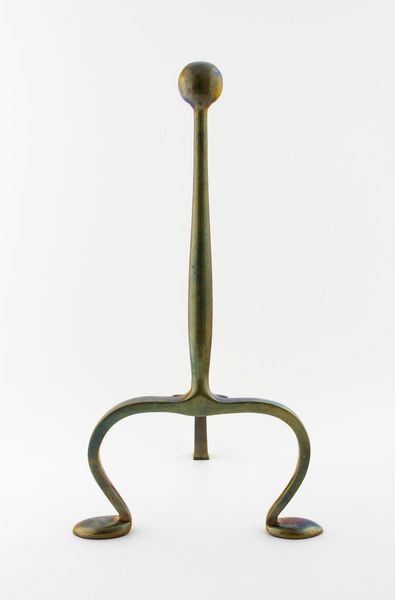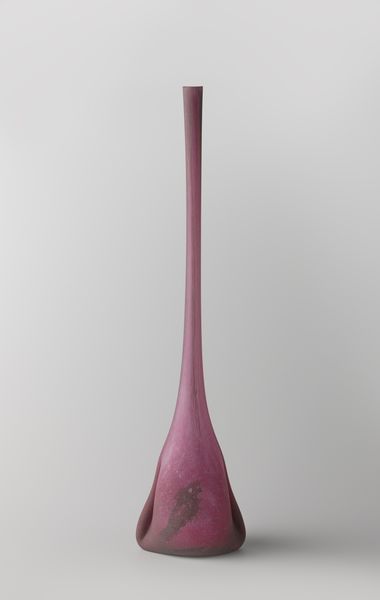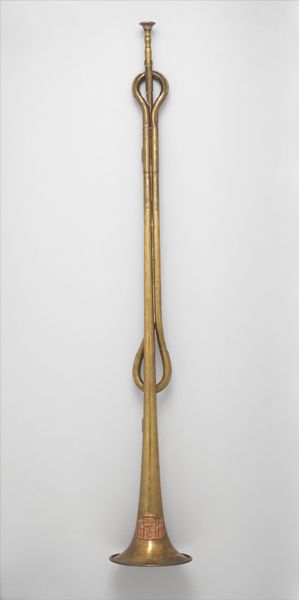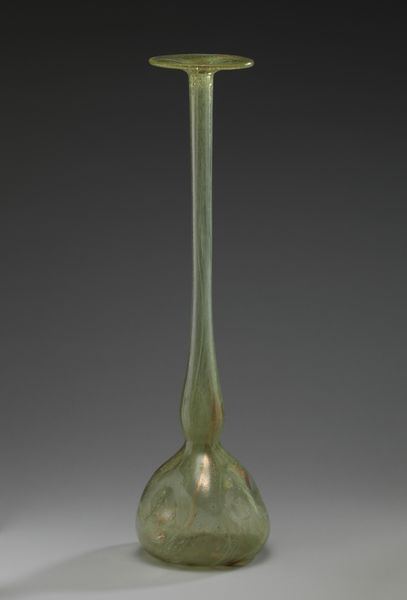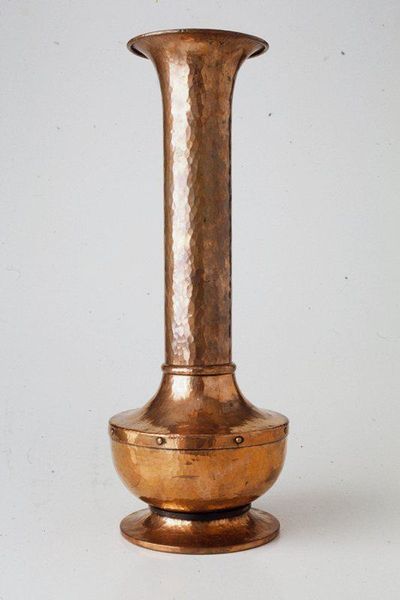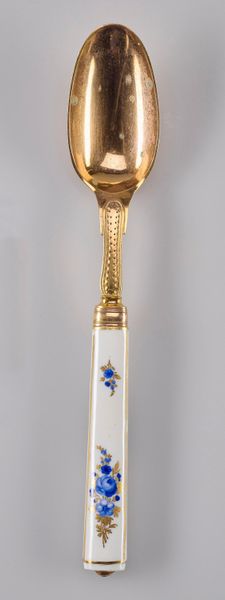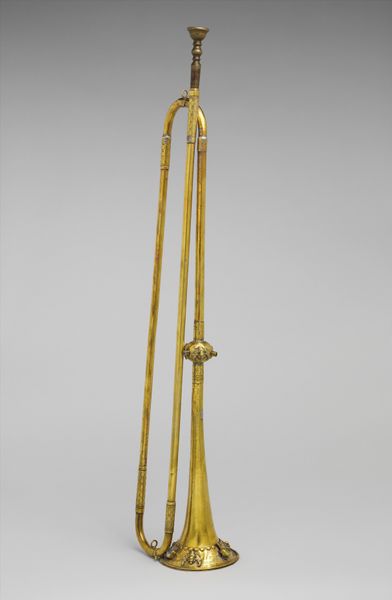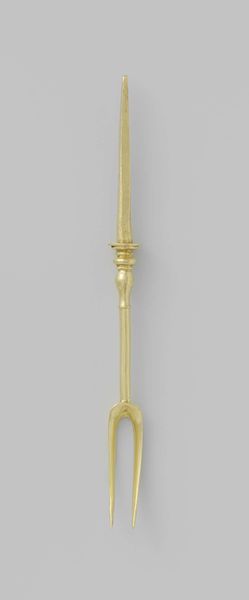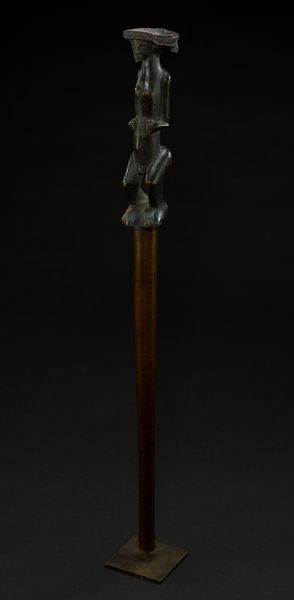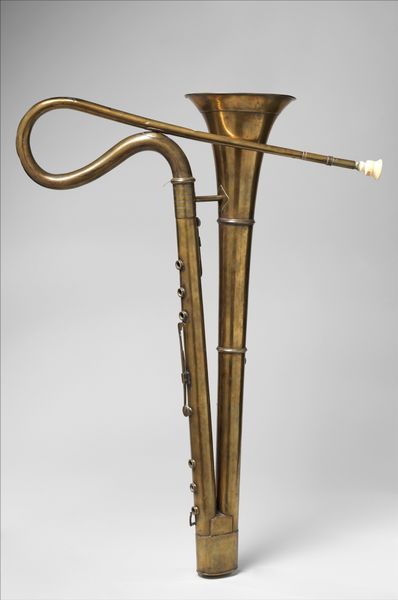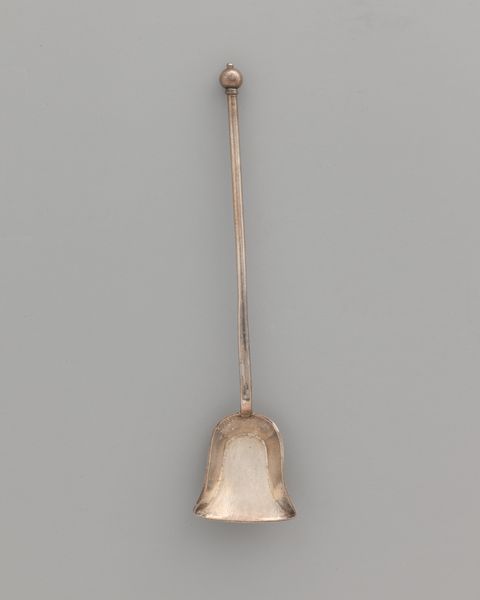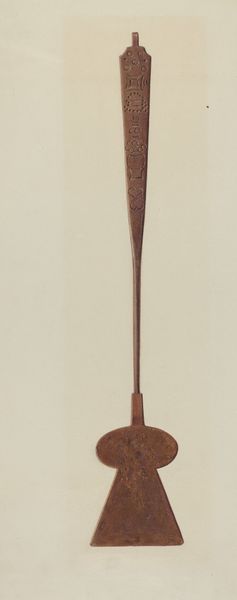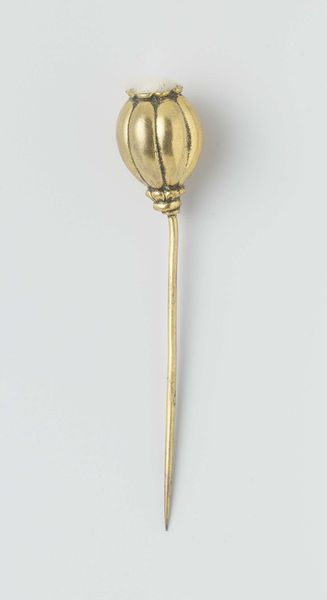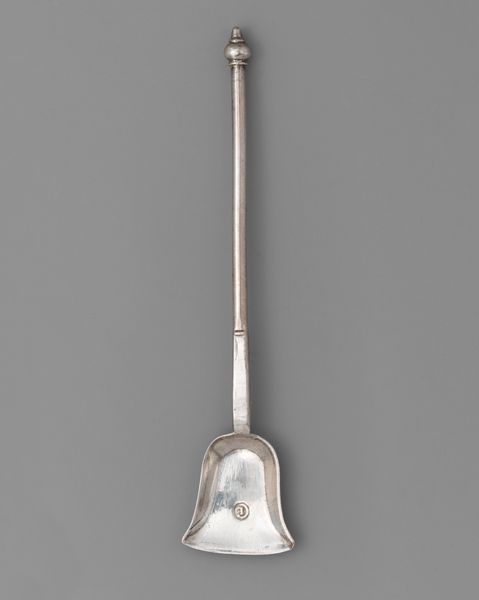
glass
#
art-nouveau
#
glass
#
ceramic
#
decorative-art
Dimensions: 20 1/4 x 5 5/8 x 5 5/8 in. (51.44 x 14.29 x 14.29 cm) (at neck)
Copyright: Public Domain
Christopher Dresser, a prominent figure in the aesthetic movement, crafted this Clutha vase of glass. Its delicate form rises from a bulbous base, tapering into an elongated neck crowned with a flattened disc. The vessel's amber hue, combined with its slender profile, evokes a sense of understated elegance. Dresser's vase exemplifies his design philosophy, which sought to elevate everyday objects into works of art. The vase's asymmetrical form, with its organic, flowing lines, challenges traditional notions of symmetry and order. This emphasis on asymmetry reflects a broader cultural shift towards embracing the beauty of imperfection and the natural world. The Clutha vase invites contemplation on the interplay between form and function, as well as the shifting boundaries between art and design. This glasswork is more than just a decorative object; it is a statement of artistic principles, reflecting a desire to redefine beauty in an age of rapid industrialization.
Comments
minneapolisinstituteofart almost 2 years ago
⋮
The first modern industrial designer, Christopher Dresser worked with a number of different British manufacturers of furniture, metalwork, wallpaper, ceramics and glass to create well-designed yet mass produced objects. For the Scottish company James Couper and Sons he designed a line of hand-blown glass produced with industrial techniques. The line was called Clutha, meaning “cloudy” in Gaelic, by the London retailer Liberty’s. These deliberately bubbly and streaked glass vases and bottles were produced in a range of tertiary colors suitable to the mid and late nineteenth century British interior: greeny yellow, amber, lilac and turquoise. Metallic streaks were added to the glass to create jewel-like qualities imitative of Roman and Venetian glass. Dresser, a botanist by training, but also an inveterate world traveler studied ceramics and glass from all cultures. The Clutha bottles and vases were inspired by Japanese, Persian and Indian water-sprinklers he saw at the South Kensington Museum in London (now the Victoria and Albert Museum).
Join the conversation
Join millions of artists and users on Artera today and experience the ultimate creative platform.
